Rioja’s Sleeping Lion
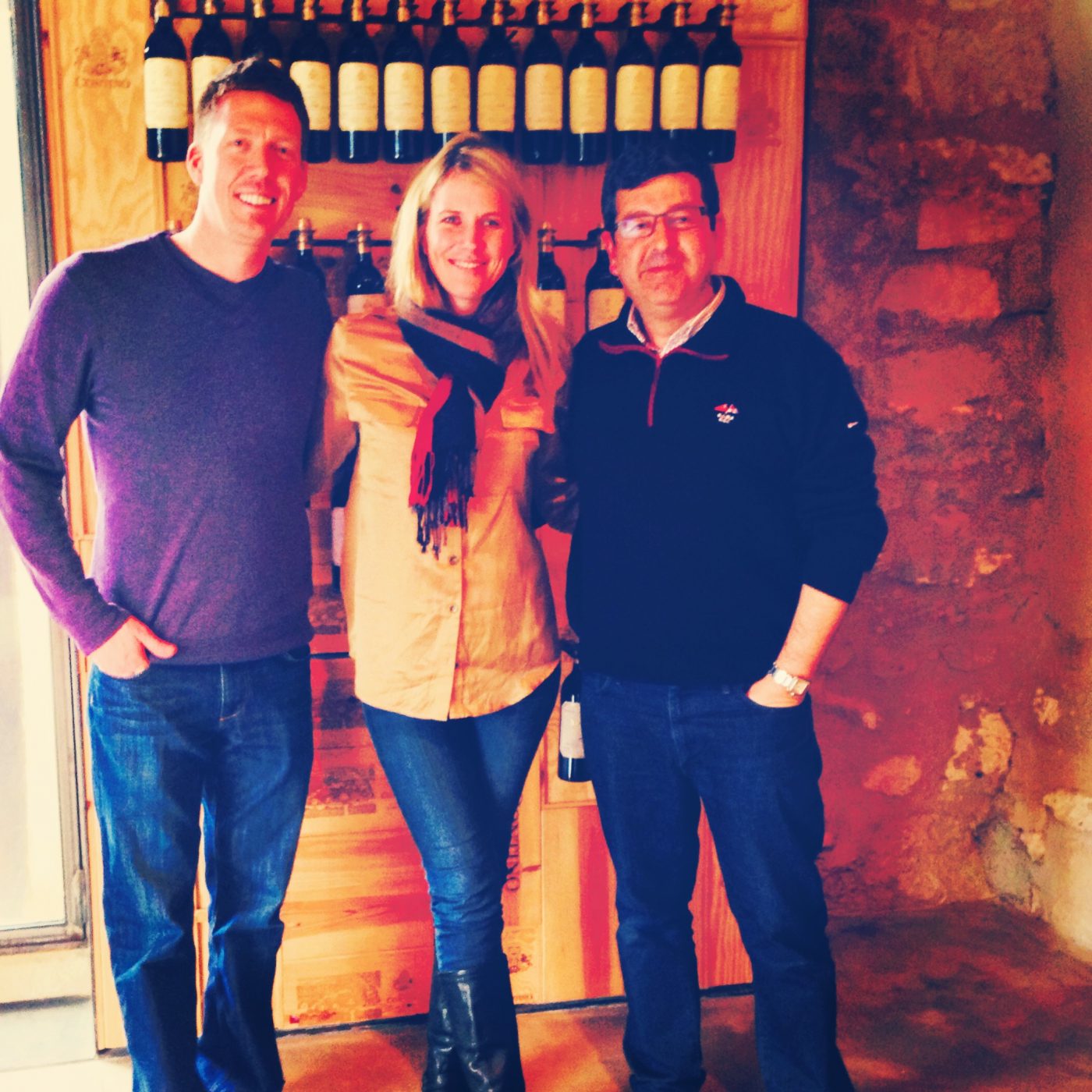
Day 7: An entire day of Wine Tasting amongst Rioja!
The day begins with a quick drive from our place in the small town of Laguardia to our first appointment in Rioja Alavesa to the gorgeous, very modern estate of Viña Real.
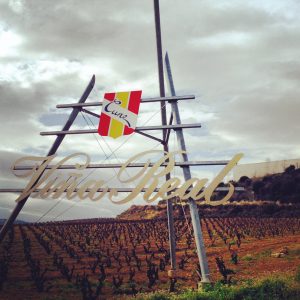 Viña Real, a winery which is part of the group, C.V.N.E. Otherwise known as ‘La Compañía del Norte de España’ (The Northern Spanish Wine Country) or Cvne, was founded by two brothers, Raimundo & Eusebio Real de Asúa, in 1879 in La Rioja region. Today, it is still controlled by the direct descendants of the founding family. The group owns two other wineries in its family company, Contino & Cune, of which we visit later in the day.
Viña Real, a winery which is part of the group, C.V.N.E. Otherwise known as ‘La Compañía del Norte de España’ (The Northern Spanish Wine Country) or Cvne, was founded by two brothers, Raimundo & Eusebio Real de Asúa, in 1879 in La Rioja region. Today, it is still controlled by the direct descendants of the founding family. The group owns two other wineries in its family company, Contino & Cune, of which we visit later in the day.
Upon entering the estate, one is blown away by the modern look and clear technological differences from the other wineries of its region. Starting in 1997, the winery took seven years to build due to its architecture and size.
Viña Real produces almost 3 million bottles, much of which (almost 90%) is produced under the Crianza classification.
Rioja Facts:
- Rioja is a wine region, with (D.O.Ca. Qualified designation of origin) named after La Rioja, in Spain.
- Rioja is made from grapes grown not only in the Autonomous Community of La Rioja, but also in parts of Navarre and the Basque province of Álava.
- Rioja is further subdivided into three zones: Rioja Alta, Rioja Baja and Rioja Alavesa. Many wines have traditionally blended fruit from all three regions though there is a slow growth in single-zone wines.
- Of the three regions – Rioja Alavesa, Rioja Alta & Rioja Baja:
- La Rioja Alavesa and la Rioja Alta, are located closer to the mountains & are at slightly higher elevations, and have a cooler climate.
- La Rioja Baja to the southeast is drier and warmer.
- The best-known & most widely used variety is Tempranillo. Other grapes used include Garnacha, Graciano and Mazuelo.
- Rioja red wines are classified into four categories:
- The first, simply labeled Rioja, is the youngest, spending less than a year in an oak aging barrel.
- A crianza is wine aged for at least two years, at least one of which was in oak.
- Rioja Reserva is aged for at least three years, of which at least one year is in oak.
- Rioja Gran Reserva wines have been aged at least two years in oak and three years in bottle.
- Reserva and Gran Reserva wines are not necessarily produced each year.
Viña Real is physically shaped to look like a ‘Giant Winery Vat’ from the outside of the establishment. Inside, the  ‘vat’ shape takes on the main focal point of the winery. From here, an enormous crane connects the entry point of the winery’s fruit to a station that lifts the fruit into its individual fermentations tanks made of concrete, stainless and oak. While I was DYING to see that thing actually operate, we understood the gist of what happens during the harvest season with the mechanics of its operation.
‘vat’ shape takes on the main focal point of the winery. From here, an enormous crane connects the entry point of the winery’s fruit to a station that lifts the fruit into its individual fermentations tanks made of concrete, stainless and oak. While I was DYING to see that thing actually operate, we understood the gist of what happens during the harvest season with the mechanics of its operation.
Committed to a ‘Gravity Flow’ system, below the main floor of the winery’s fermentation hall, the visually stimulating architecture takes on a whole other appeal with a manmade ‘aging cave’ that is built into the side of the winery’s hillside. Measuring over two football fields long and standing over 50 feet tall, the inside structure is made entirely of limestone, keeping the interior of the cave at a perfect temp for aging the wines. One more floor below, lies the winery’s barrel room. Visually built with columns of 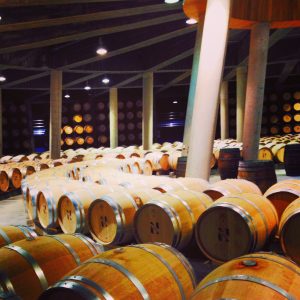 slanting beams, the room looks as if it definitively leads away from the building at a slant. Yet, when you head up one floor again, you see the room clearly has one level floor and ceiling. Very cool.
slanting beams, the room looks as if it definitively leads away from the building at a slant. Yet, when you head up one floor again, you see the room clearly has one level floor and ceiling. Very cool.
After the tour, we visit with our tour guide tasting through the winery’s line up of wines. All very nice – again, with 90% of the winery’s production focusing on the young structure of the Crianza Classification – some of the winery’s entry level wines were exceptionally easy drinking and well priced. From there, the 2007 Reserva was hi-light of our winery tasting, loaded with funky notes of mushroom and brite herbal & cherry, raspberry and rosemary flavors.
From Viña Real, we head to Contino, number two of the three wineries situated within the CVNE family portfolio.
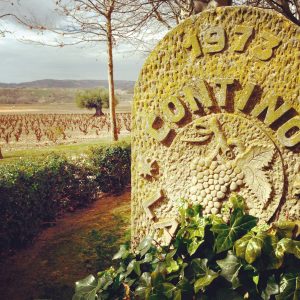 Contino Winery, the small gem of the CVNE portfolio, sits just on the other side of the hill from Viña Real. Switching gears almost immediately, you can feel the energy of Contino as it emerges from the gorgeous contiguous vineyard estate that surrounds the finca’s original 250yr old cottage (now turned winery). We are greeted by Jesús Madrazo, lead winemaker of Contino and fifth generation to the founding family of CVNE. His energy is immediately overwhelmingly passionate and hospitable.
Contino Winery, the small gem of the CVNE portfolio, sits just on the other side of the hill from Viña Real. Switching gears almost immediately, you can feel the energy of Contino as it emerges from the gorgeous contiguous vineyard estate that surrounds the finca’s original 250yr old cottage (now turned winery). We are greeted by Jesús Madrazo, lead winemaker of Contino and fifth generation to the founding family of CVNE. His energy is immediately overwhelmingly passionate and hospitable.
We begin in the winery’s gorgeously simple, yet rustic ‘salon’. Surrounded by a modest, yet contemporary design, the room’s main focus hi-lights the large stone wall which neatly displays the winery’s collection of its entire 39 vintages starting with its first, 1974.
Jesús’s discussion begins first with the history of Rioja, its separating regions (see above), and the land that now surrounds Contino in the region of Rioja Alavesa. He explains that Contino, with vines originally planted by his father, was really the first winery in all of Rioja to be considered ‘estate’ made – producing only one wine entirely made from the land surrounding the winery from 1974-1994 (mainly from the grapes: Tempranillo & Graciano, called Contino). After that time, producing single vineyard estate wines made from single grape varietals, in addition to the original Contino blend, as the vintages progressed. Each vintage’s production is listed individually by bottle quantity on each year’s labels. Some years producing more than others, Jesús explains that each year Contino only produces ‘what mother nature has granted him’. If the vintage is bad, or shorthanded, then so be it. For example, he explains, the 2013 vintage could be one of those vintages. In Sept of 2013, an enormous hail storm came through the region wiping out 90% of Contino’s crop. Now, as the 2013 vintage rests amongst the winery’s cellar, the company decides within the next couple of weeks how the wine is to be bottled with such little production. A limited ‘Anniversary Magnum’ or as a smaller batch of 750mLs? The query is upon the winery as we speak.

We continue with a cellar tour, fermentation facility look, barrel tasting (of the very limited 2013 vintage-YUM!!) and last, we walk around through the back end of the facility to the outside vineyard space which hosts – right in the middle of the vineyard – the oldest male olive tree in ALL of space, 1015yrs old! Gorgeous.
While Jesús’s philosophy is entirely impressive, stressing the importance of vine age (the winery has one section that is upwards of 75yrs old) and influence of barrel program, again it is clear that his love for the industry goes well beyond just his position as head winemaker. Because he is so highly involved with the vineyard space and all that happens in the production process, that he wants all of his wines to speak solely of the grape’s terroir rather than of its barrel program. Stressing the need to ‘keep the wines clean of barrel influence’, it is refreshing to hear him speak of his craft. In the end, his 300-400,000 bottle yearly production, just a teeny sliver of the rest of CVNE’s family production, is a mere reflection of a statement made earlier by Jesús explaining the region’s relationship to the rest of the country when it comes to wine. He says…’We (Rioja) are the Sleeping Lion of Spain’s wine industry.’
The ‘Sleeping Lion’, which refers to the shape of a section of the Sierra de Cantabria mountains that surrounds the Rioja region is, as he explains, is highly symbolic of the region of Rioja. While currently, others are fawning over the likes of Ribera del Duero, Toro and more, he says, ‘…we are the region that Spain needs to look out for…’ referring to the intricacies of Rioja’s upcoming wines and more modern production ideas. While yes, I couldn’t agree with Jesús more…I feel in the end, he is not only describing Rioja, BUT…Contino at its best. ‘The Sleeping Lion’ of the Rioja. The elegance, the grace, the strength, the loyalty and the winery’s tradition is much like that of a lion’s strength. Protective of its domaine, yet powerful and will always (in my mind), remain KING of its region. Contino.
Needless to say, the experience was impeccable. Through to the private luncheon prepared by the winery’s catering team of the region’s most local dishes paired to the Contino’s portfolio, the lengthy tasting of the winery’s portfolio and the lively conversation which streamed from life to wine and back on through, I truly can’t say enough about the visit with Señor Jesús. As if the experience was not already one of my career hi-lights…he then sealed the experience with an exceptionally generous winery gift, an inaugural vintage’d bottle from Contino – from 1974 – signed by Jesús himself, celebrating the winery’s 40th year anniversary and, most significantly, also my birth year. A bottle that I will open in April, when I celebrate my inaugural birth year as well.
lengthy tasting of the winery’s portfolio and the lively conversation which streamed from life to wine and back on through, I truly can’t say enough about the visit with Señor Jesús. As if the experience was not already one of my career hi-lights…he then sealed the experience with an exceptionally generous winery gift, an inaugural vintage’d bottle from Contino – from 1974 – signed by Jesús himself, celebrating the winery’s 40th year anniversary and, most significantly, also my birth year. A bottle that I will open in April, when I celebrate my inaugural birth year as well.
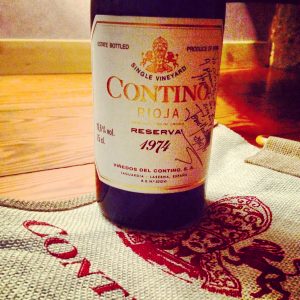
Thank you to CVNE for an exquisite and most hospitable visit, and most importantly…to our new friend, Jesús Madrazo, for an unforgettable career experience that I will always cherish.
Salut to you, Rioja’s ‘Sleeping Lion’!
Comments 2
Thanks for the great write-up, I think I am going to be in Rioja for a week for wine touring later this year. Was it difficult to get an appointment with Jesus? BTW when we were in Portugal at Esporao we ran into an older Olive tree, CRAZY how old these trees are and how they can date them! (http://www.winesolutions.com/2014/03/esporao-gentle-ecological-viticultural.html)
Hi Tom,
Thanks so much for your comment. Yes, I made my appt with Jesus well in advance, approx four months. As you read, an excellent visit! Loved your Portuguese olive tree, too. Very cool – seriously, they live forever!
Enjoy your trip and thanks for sharing!
Cheers,
Leslee